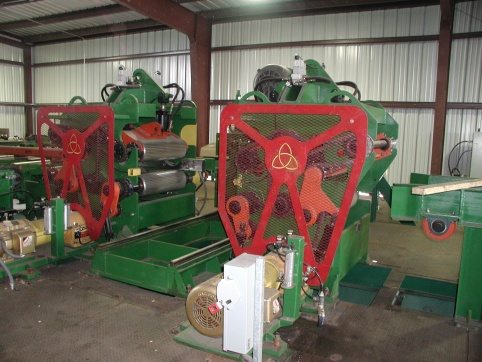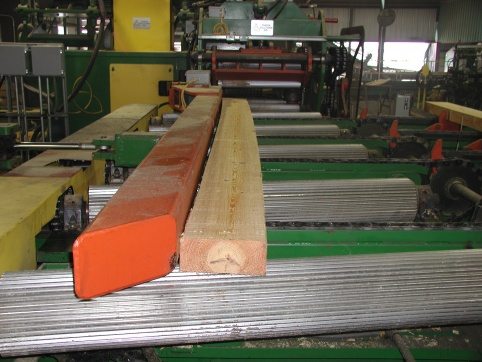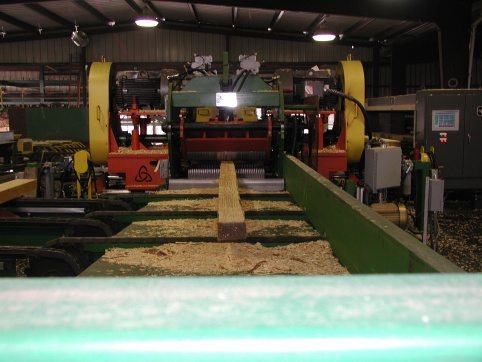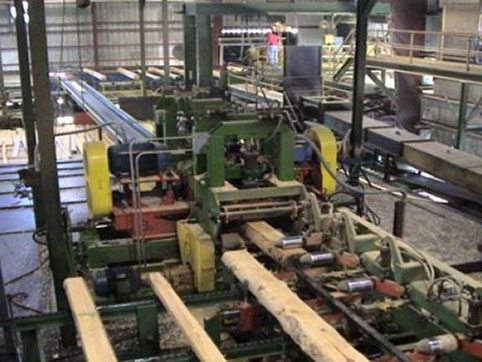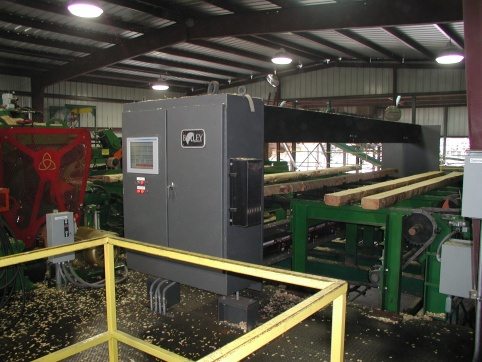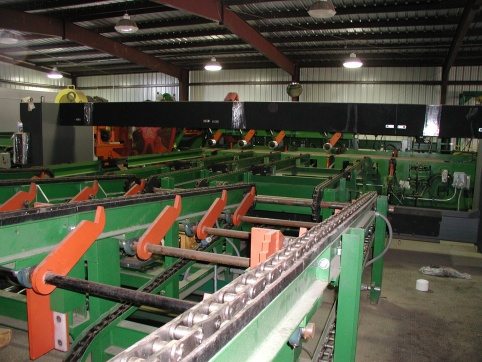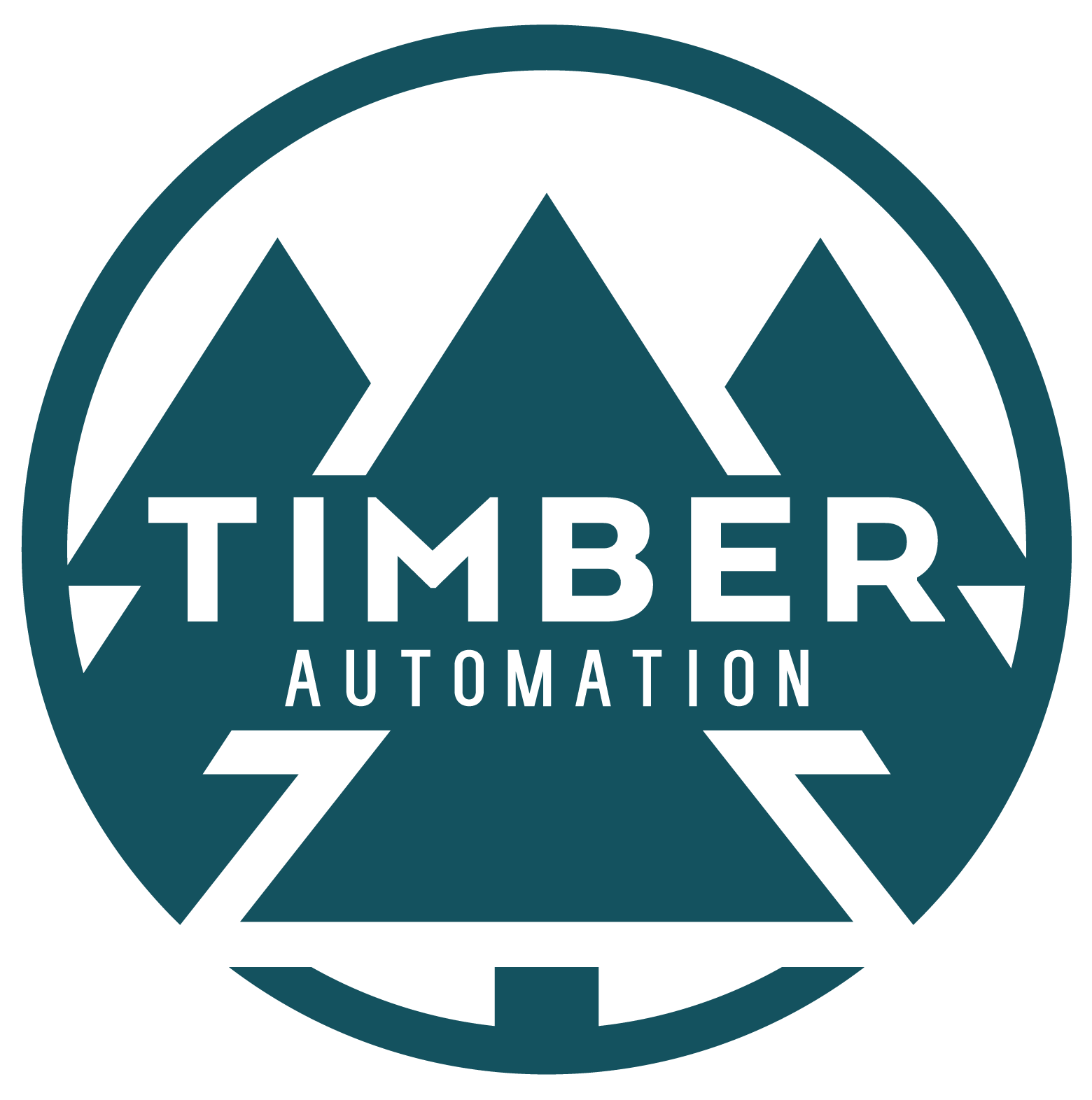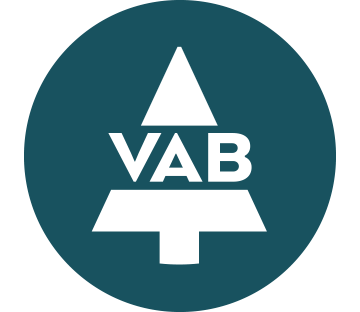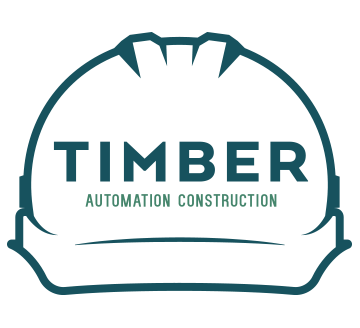A Curve Canter System consists of:
A. An Optimizer with feed system.
B. A curved canter module with infeed.
C. A transport system to the gang.
D. A gang.
Curve Canting System Features
-Increase Production and Yield By Adding Curve Sawing.
-State of The Art Optimization And Controls.
-Increase Edging Capacity.
-Increase Trimming Throughput.
The advantages that attract customers to the curve canter method of curve sawing are primarily reliability and speed. Decoupling the curve canter from the sawing allows a very stout canter system to be utilized, that is nearly impossible to break. It also lets the canter run at a higher speed than the saws can stand. It is simpler to understand, monitor and maintain primarily because you can see it better. It is relatively easy to look at the faces coming out of the canter and evaluate them prior to sawing them up and “destroying the evidence”. Additionally the cants are not steered nearly as much by the canter as the wiggle box because you can hold the cant much more securely.
Also, flares and rough logs don’t have as much effect on the curve canter as the wiggle box due to the relative size and power of the chip heads and support. The balancing the chip depth, limit chip depth, step out for max chip depth, pad board, etc. programming mainstays of the wiggle box are not required . With a curve canter the gang saw can run a much smaller gap than a wiggle box, which allows more throughput or a slower feed speed or both. Existing gangs can be used in a curved canter system, which can save a tremendous amount of money.



